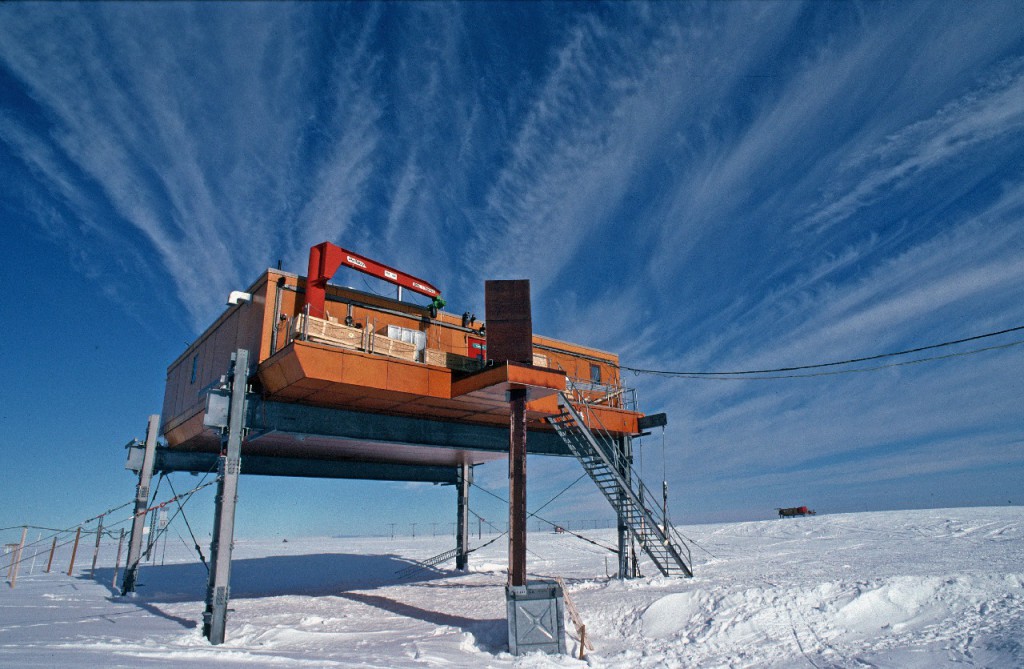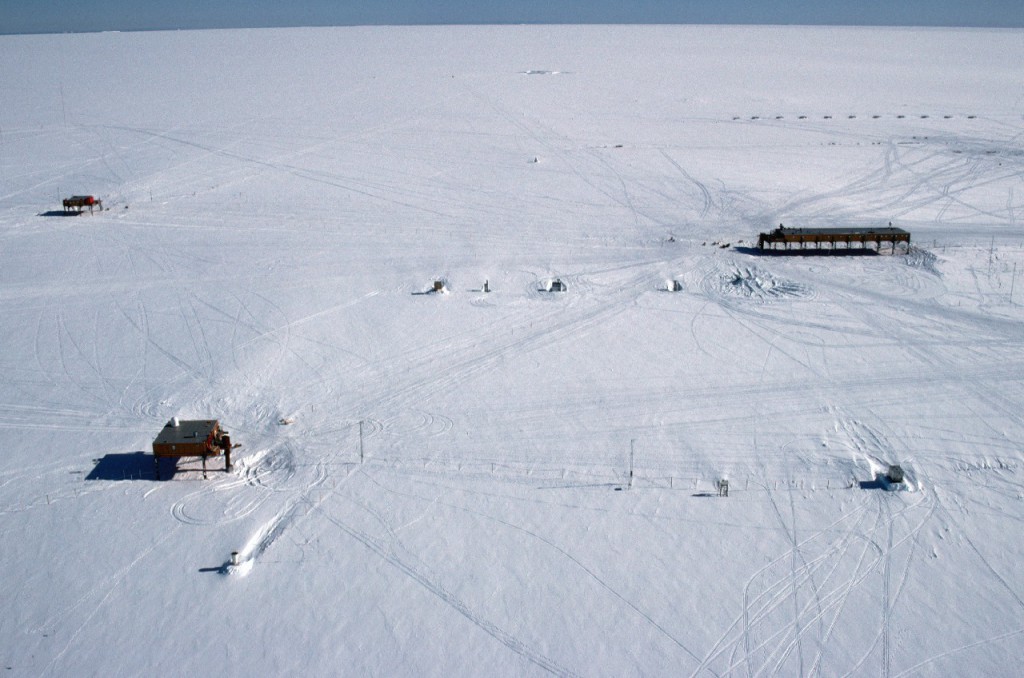LARGE quantities of ozone-depleting chemicals have been discovered in the Antarctic atmosphere by researchers from the University of Leeds, the University of East Anglia, and the British Antarctic Survey.
The team of atmospheric chemists carried out an 18-month study of the make-up of the lowest part of the earth’s atmosphere on the Brunt Ice Shelf, about 20 km from the Weddell Sea. They found high concentrations of halogens – bromine and iodine oxides – which persist throughout the period when there is sunlight in Antarctica (August through May). A big surprise to the science team was the large quantities of iodine oxide, since this chemical has not been detected in the Arctic.

The source of the halogens is natural – sea-salt in the case of bromine, and in the case of iodine, almost certainly bright orange algae that coat the underside of the sea ice around the continent.
These halogens cause a substantial depletion in ozone above the ice surface. This affects the so-called oxidising capacity of the atmosphere – its ability to “clean itself” by removing certain – often man-made – chemical compounds. The iodine oxides also form tiny particles (a few nanometres in size), which can grow to form ice clouds, with a consequent impact on the local climate.
Scientists now plan to carry out further research to assess what impact this may be having on the local environment. Very recent satellite observations by one of the team, Dr Alfonso Saiz-Lopez, have confirmed that iodine oxides are widespread throughout coastal Antarctica.

John Plane, professor of atmospheric chemistry at the University of Leeds, says: “Halogens in the lowest part of the atmosphere have important impacts on ozone depletion, the ability of the atmosphere to remove potentially harmful compounds, and aerosol formation. All these atmospheric phenomena are linked to climate change. We still have to work out what the ramifications of this discovery are. These exciting results also show how important it is to keep exploring the atmosphere – there seems to be plenty more to find out.”
Using high-tech measuring equipment, a beam of light was projected across the ice shelf and the spectrum of the reflected light analysed and chemical levels measured. The work was carried out in a new atmospheric observatory at Halley Research Station, operated by the British Antarctic Survey, and was supported by funding from the U.K.’s Natural Environment Research Council.
Issued by the University of Leeds Press Office. Tel: 0113 343 4031
Contact: Guy Dixon; G.Dixon@leeds.ac.uk; 44-011-334-38299
British Antarctic Survey Press Office.
Linda Capper – tel: ++44 1223 221448, mob: 07714 233744, email: l.capper@bas.ac.uk
Athena Dinar – tel: ++44 1223 221414, mob:07740 822229, email: a.dinar@bas.ac.uk
Author contact: Anna Jones @bas.ac.uk; 01223 221435; aejo@bas.ac.uk
Notes for Editors:
British Antarctic Survey is a world leader in research into global issues in an Antarctic context. It is the UK’s national operator and is a component of the Natural Environment Research Council. It has an annual budget of around £40 million, runs nine research programmes and operates five research stations, two Royal Research Ships and five aircraft in and around Antarctica. More information about the work of the Survey can be found at: www.antarctica.ac.uk
